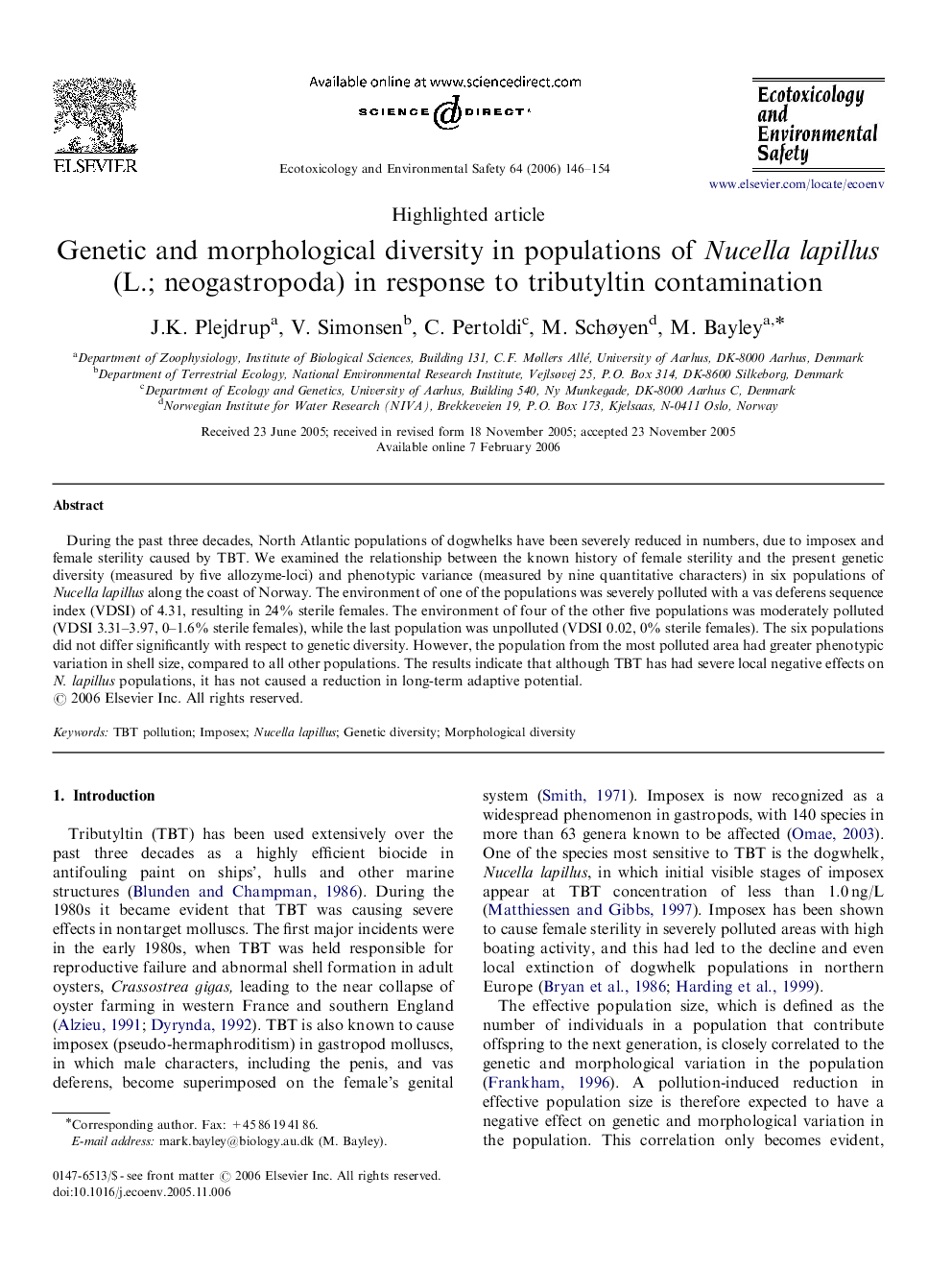| Article ID | Journal | Published Year | Pages | File Type |
|---|---|---|---|---|
| 4422480 | Ecotoxicology and Environmental Safety | 2006 | 9 Pages |
During the past three decades, North Atlantic populations of dogwhelks have been severely reduced in numbers, due to imposex and female sterility caused by TBT. We examined the relationship between the known history of female sterility and the present genetic diversity (measured by five allozyme-loci) and phenotypic variance (measured by nine quantitative characters) in six populations of Nucella lapillus along the coast of Norway. The environment of one of the populations was severely polluted with a vas deferens sequence index (VDSI) of 4.31, resulting in 24% sterile females. The environment of four of the other five populations was moderately polluted (VDSI 3.31–3.97, 0–1.6% sterile females), while the last population was unpolluted (VDSI 0.02, 0% sterile females). The six populations did not differ significantly with respect to genetic diversity. However, the population from the most polluted area had greater phenotypic variation in shell size, compared to all other populations. The results indicate that although TBT has had severe local negative effects on N. lapillus populations, it has not caused a reduction in long-term adaptive potential.
